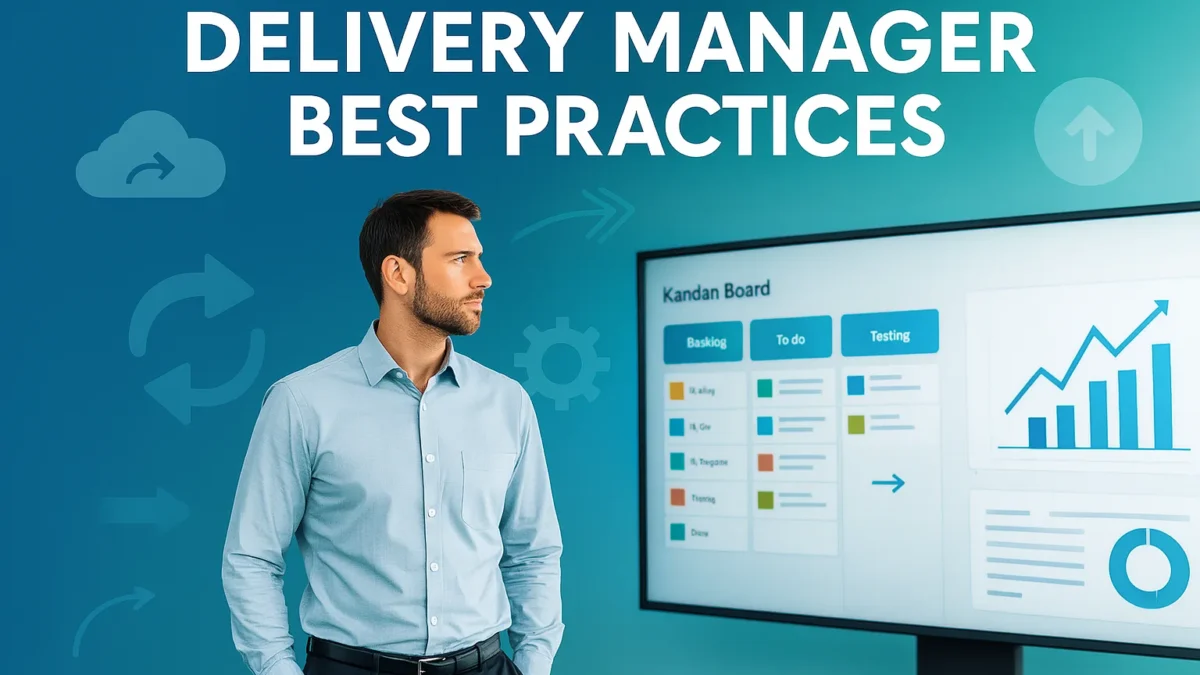Delivery Manager Best Practices matter because they turn chaos into clarity. When your teams understand the work, the risks, the path to production, and how success is measured, delivery becomes calm and repeatable—even in fast-changing tech environments. This guide explains every concept in plain language, with examples, mini case studies, and checklists you can use immediately. Educational guide—adapt to your context.
Table of Contents
- 1) Blend Agile with Delivery Discipline
- 2) Develop Technical Literacy
- 3) Focus on Customer Value
- 4) Practice Radical Transparency
- 5) Build Psychological Safety
- 6) Use Meaningful Metrics (DORA/Four Keys)
- 7) Cultivate T-Shaped Skills
- 8) Foster Continuous Improvement
- 9) Scale Remote & Asynchronous Collaboration
- 10) Lead with Empathy & Clarity
- Operating Cadence & Working Agreements
- Risk & Dependency Patterns that Actually Work
- Metrics that Matter (Flow, Stability, Value)
- Tooling & Automation the Lean Way
- Remote & Cross-Time-Zone Excellence
- 30-60-90 Plan for New Delivery Leaders
- Anti-Patterns & Quick Cures
- Mini Case Studies
- Templates & Checklists
- FAQs
- Internal Links
- External References
- Conclusion
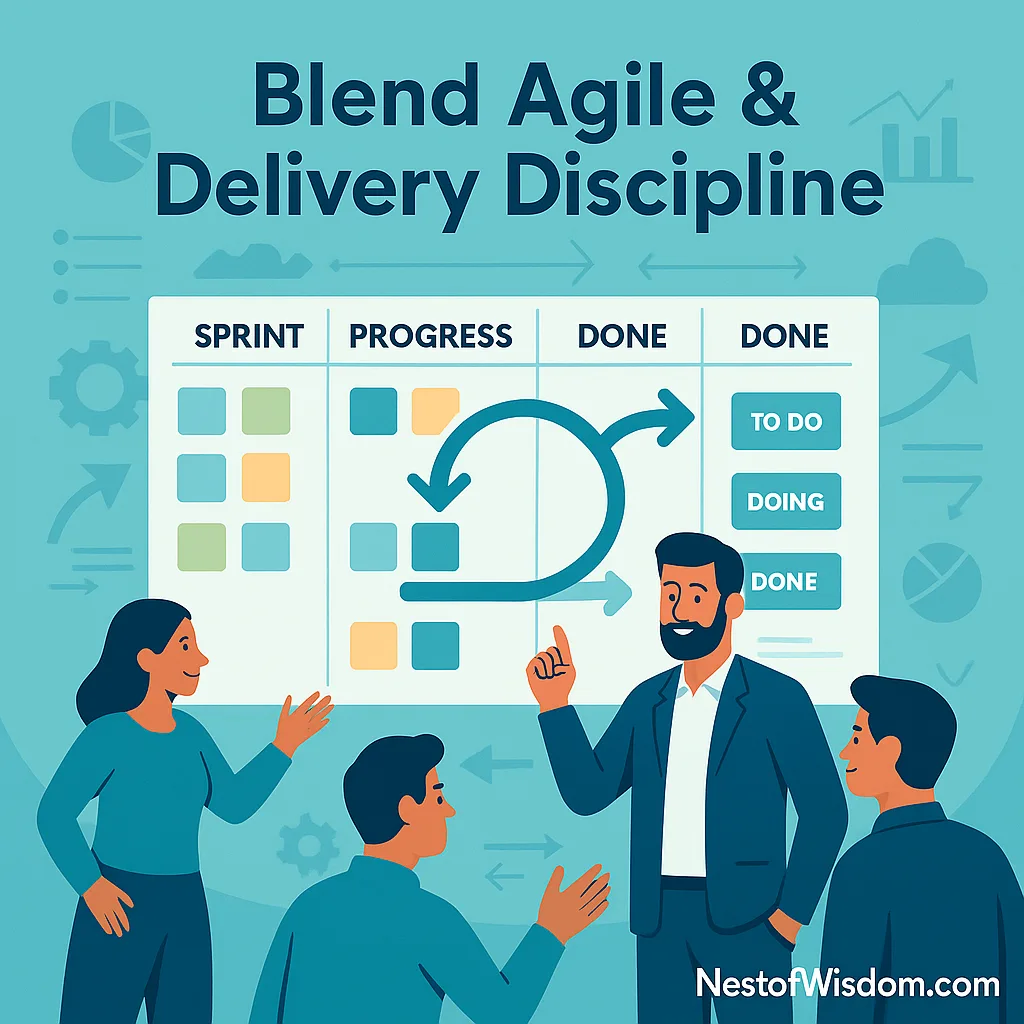

1) Blend Agile with Delivery Discipline
At the heart of Delivery Manager Best Practices is mixing flexibility with structure. Scrum provides cadence (sprints, reviews) while Kanban gives flow (WIP limits, visual queues). Most teams need a hybrid: structured planning and demos, plus continuous intake for unplanned work. Your job is to tailor rituals, not copy them.
How this looks in real life: backlog groomed weekly; sprint goals for planned work; Kanban swimlane for urgent items with WIP limits to protect focus. Release train dates are predictable, but scope flexes. Teams inspect and adapt quarterly.
தமிழ் குறிப்பு: “ஒரு வடிவம் எல்லா அணிகளுக்கும் சரிபடாது.” உங்கள் அணியின் சூழலைப் பார்த்து செயல்முறையை நீங்கள் தச்சுக்காரன் போல அமைக்க வேண்டும்.
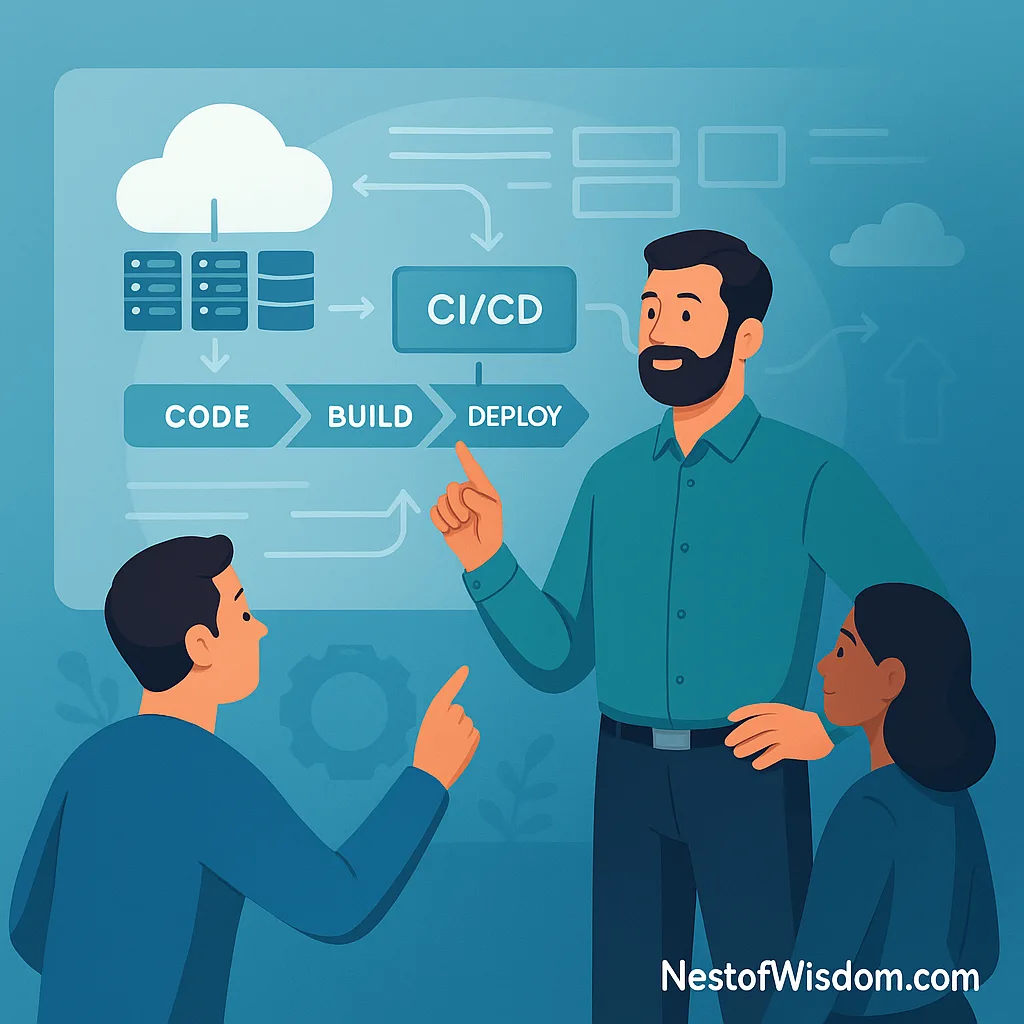

2) Develop Technical Literacy
Delivery Manager Best Practices don’t require you to write production code, but you should grasp the path to prod: Dev → PR → CI gates → staging → canary → prod. Learn what each gate checks (tests, security scans, approvals) and where lead time is lost.
Ask better questions: “What’s the blast radius if this fails?” “Can we toggle this feature?” “How fast can we restore?” “What telemetry confirms it’s healthy?” These questions keep discussions practical and risk-aware.
Artifacts that help: keep golden paths (standard “how we build and ship” doc) and runbooks in the repo where engineers live—not buried in slides. When knowledge is versioned with code, it stays fresh.
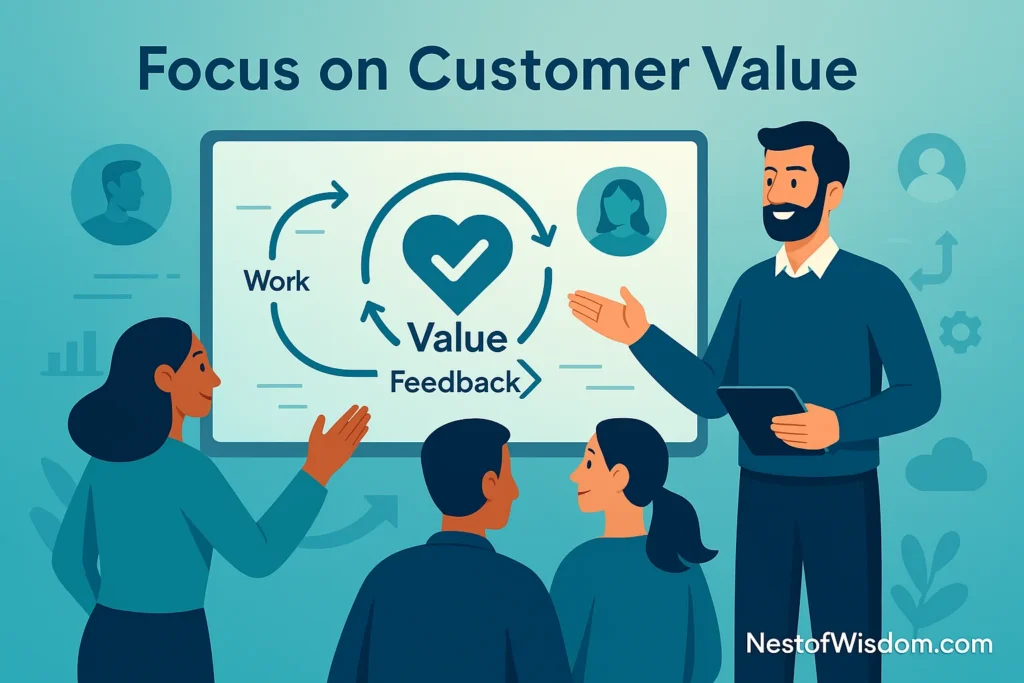

3) Focus on Customer Value
Outputs aren’t outcomes. With Delivery Manager Best Practices, every epic should start with a plain-language value statement: “For [persona], we will [change] so that [benefit], measured by [metric].” This connects tickets to impact and anchors prioritization.
Example: “For new SMB admins, we will simplify onboarding so that time-to-first-value drops from 3 days to 1 day, measured by activation rate.” Now everyone knows what “good” looks like.
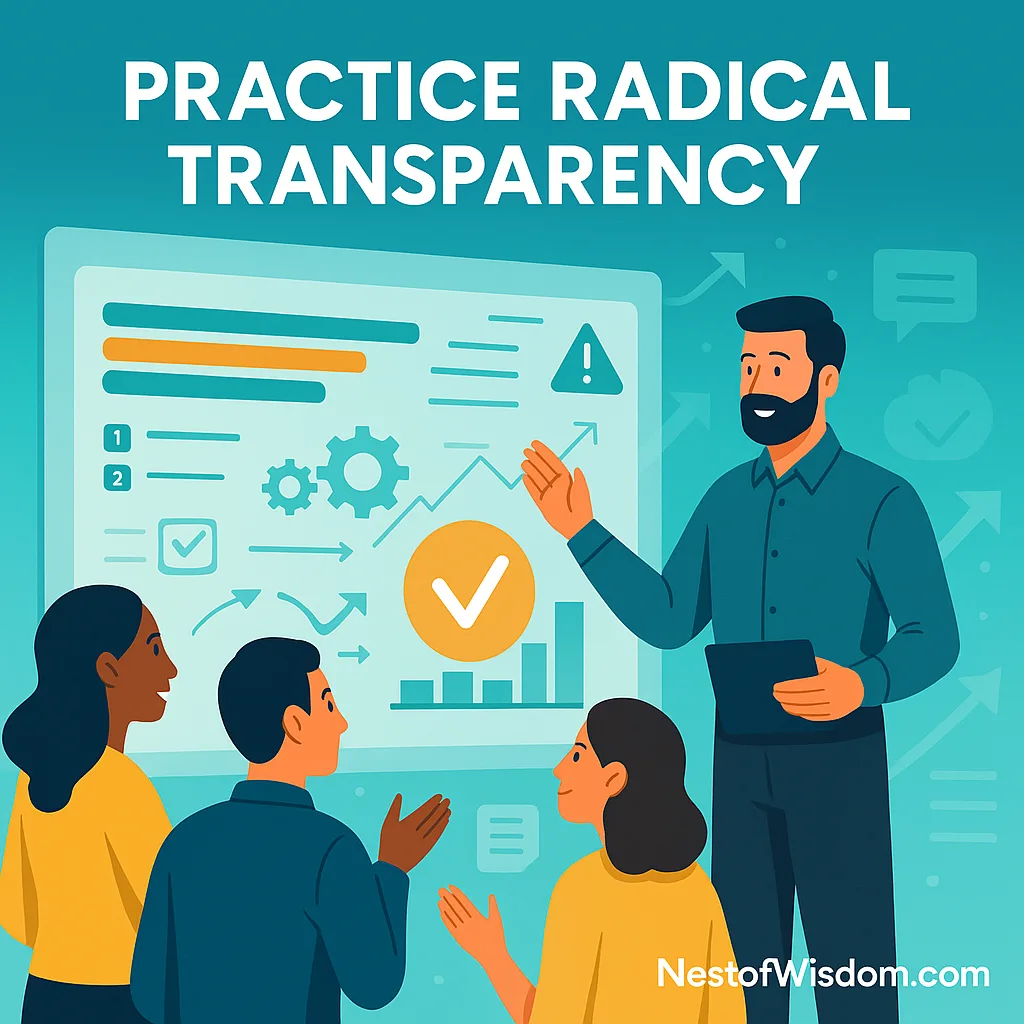

4) Practice Radical Transparency
Transparency is sharing current truth—not a glossy plan. Delivery Manager Best Practices recommend one shared tracker for goals, decisions, metrics, risks, dates. Stakeholders see the same data the team sees. Risks are logged when discovered, not at the end.
Weekly rhythm: demo progress, review the risk log first, agree adjustments, document decisions right in the tracker. No hidden versions; no surprise escalations.


5) Build Psychological Safety
Teams ship faster when it’s safe to speak up. As part of Delivery Manager Best Practices, make it normal to ask for help, challenge assumptions, and admit unknowns. Replace blame with learning: “What did the system allow and how do we improve it?”
Leader script: “If you’re blocked or unsure, flag it early—my job is to remove obstacles.” Over time, you’ll see earlier risk surfacing and fewer late surprises.
தமிழ் ஞானம்: “பயம் குறைந்தால் புதுமை அதிகரிக்கும்.” பாதுகாப்பான சூழல் புதுமைக்கு விதை.
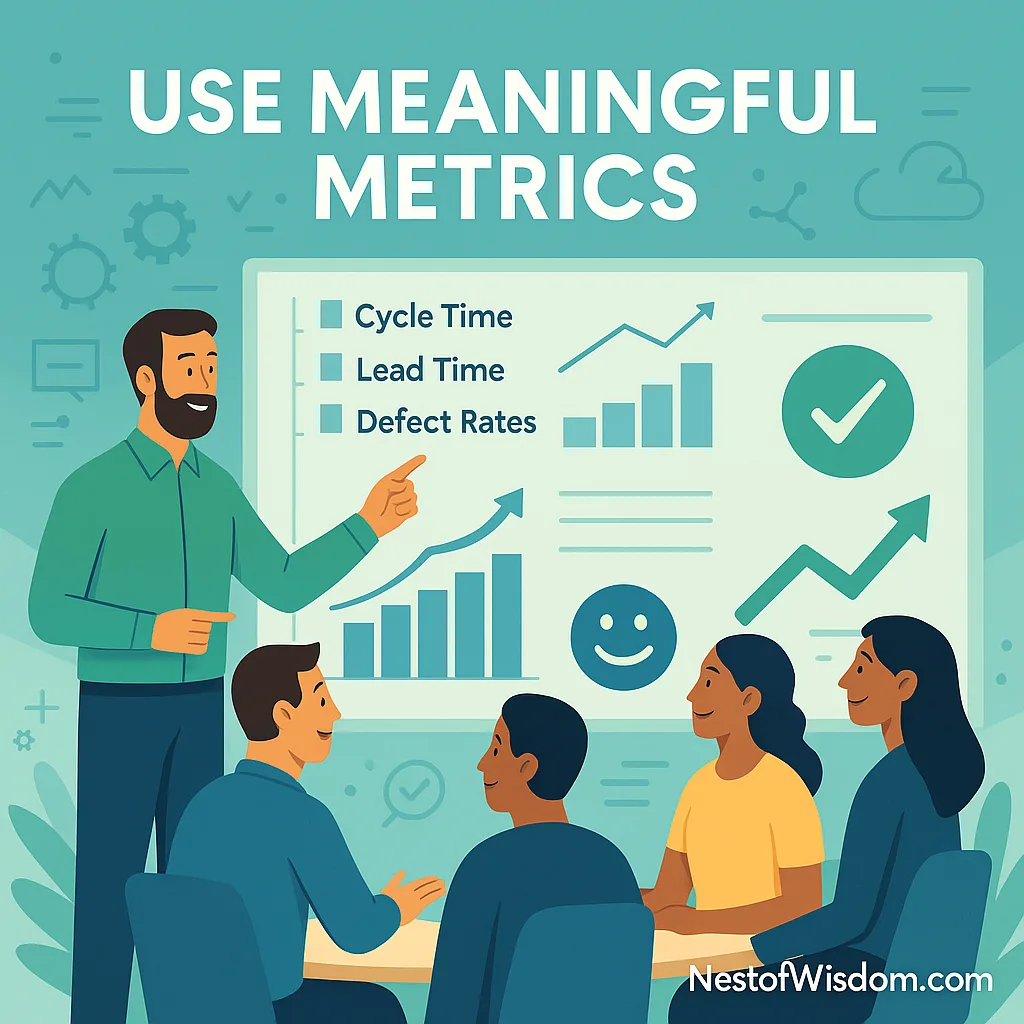

6) Use Meaningful Metrics (DORA/Four Keys)
Delivery Manager Best Practices favor a small, balanced set: lead time for changes, deployment frequency, change failure rate, time to restore. Pair these with flow metrics (cycle time, WIP, throughput) and a value metric (e.g., activation, retention). Metrics guide conversations; they don’t punish people.
Guardrail: if a feature doesn’t move its target metric within a defined window, stop investing and reassess. This prevents zombie work.
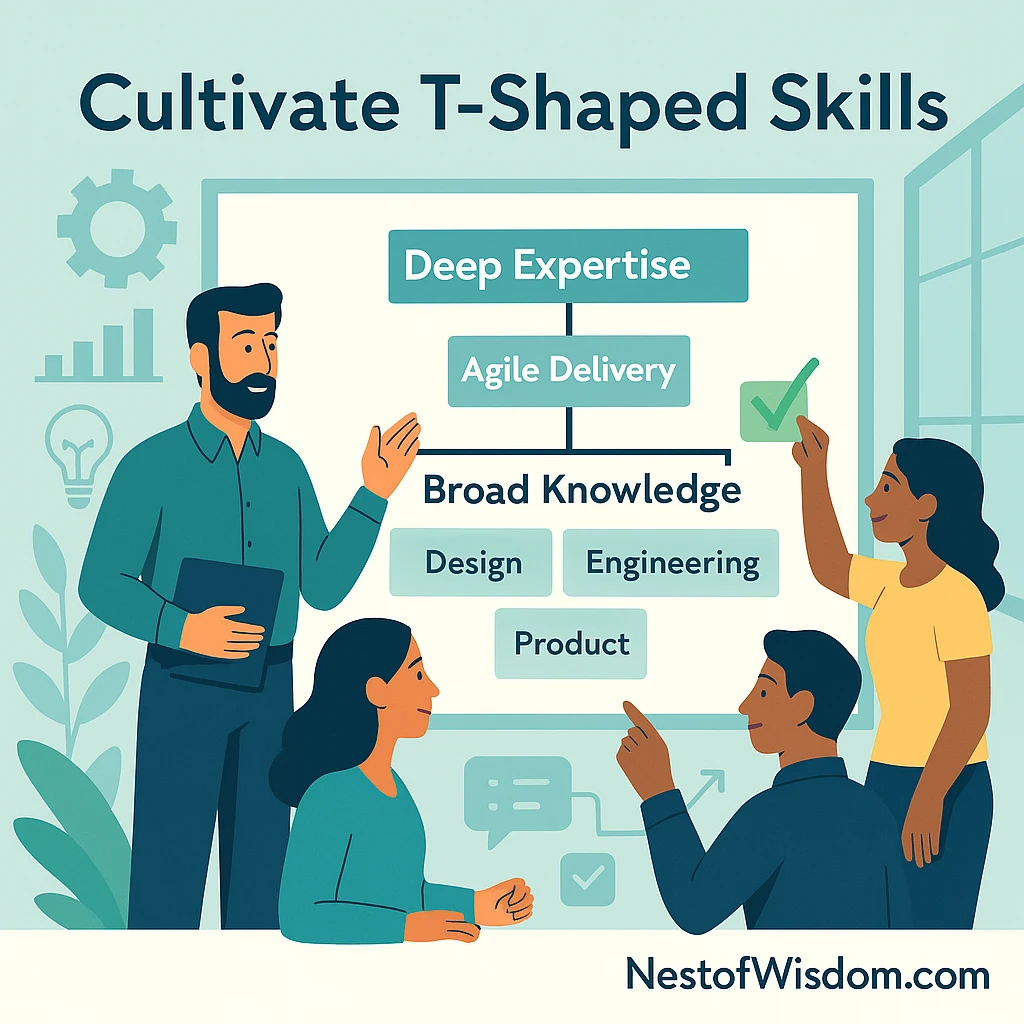

7) Cultivate T-Shaped Skills
With Delivery Manager Best Practices, leaders go deep enough to empathize and broad enough to connect dots. Deep skill = your specialty (e.g., program delivery). Broad skill = fluency across product, engineering, design, data, and finance. The “T” lets you translate, negotiate trade-offs, and keep everyone aligned on value.
Starter habit: attend one design critique, one incident review, and one sales call each month to expand your “T”.
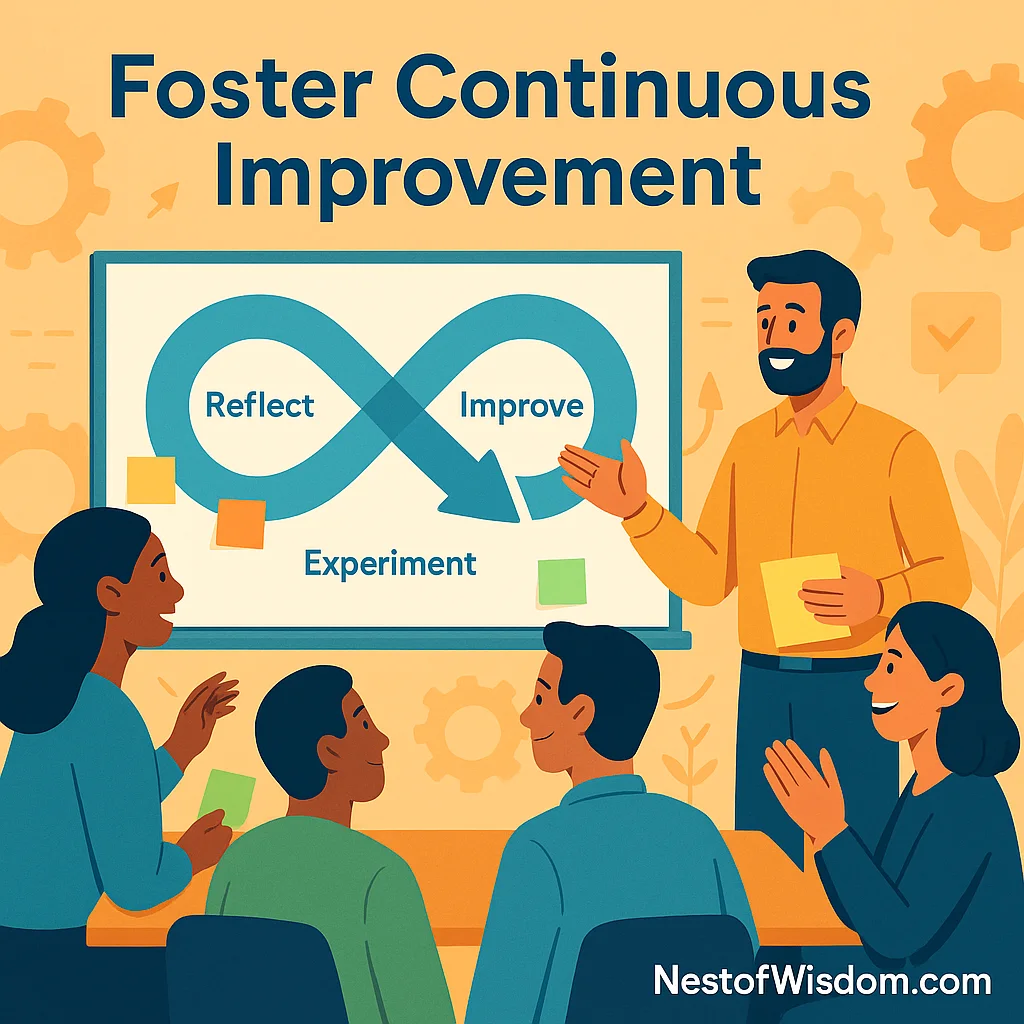

8) Foster Continuous Improvement
Retros aren’t therapy—they’re how systems learn. Delivery Manager Best Practices make improvement visible: track experiments, assign an owner, set a check-in date, and measure impact. Small fixes (better standup structure, clearer definitions of done) compound into big gains.
Tip: reserve 10% capacity for improvement work every sprint. If you never invest, the system never improves.
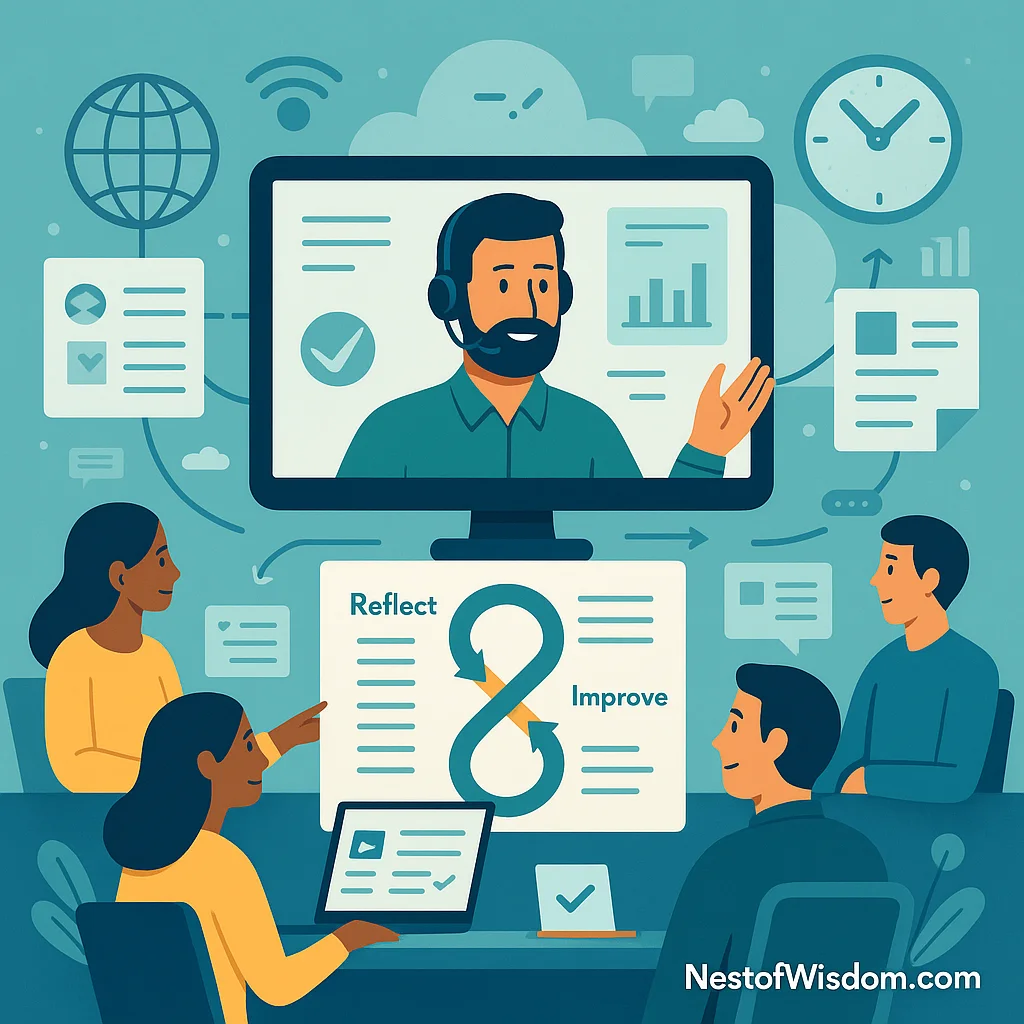

9) Scale Remote & Asynchronous Collaboration
Delivery Manager Best Practices for remote teams: write things down, default to async, and use short, purposeful live sessions for alignment. Keep updates short and scannable. Record demos. Use shared dashboards so time zones don’t block progress.
Meeting upgrade: replace status meetings with a written weekly update (goals, progress, risks, asks). Meet only to decide.


10) Lead with Empathy & Clarity
Empathy hears the human signal; clarity removes the fog. Together they’re core Delivery Manager Best Practices. State priorities in one sentence. Repeat due dates. Confirm who owns what. Celebrate wins by naming the behavior you want repeated.
தமிழில்: “தெளிவு + கருணை” = வலுவான வழிநடத்தல்.
Operating Cadence & Working Agreements
Cadence is your drumbeat. Delivery Manager Best Practices recommend a light, repeatable rhythm:
- Daily: 10–12 minute standup that starts with blockers and risks (not status). “What will move the goal today?”
- Weekly: demo, review risk log, adjust plan, document decisions in the tracker. One truth source.
- Bi-weekly: retro with one concrete improvement experiment and a check-back date.
- Monthly: outcome review against value metrics; stop work that isn’t moving the needle.
Working agreements make norms explicit: response windows, code review SLA, definition of ready/done, and who can break a tie. When expectations are written, conflict drops and flow improves.
Risk & Dependency Patterns that Actually Work
Great delivery isn’t risk-free—it’s risk-aware. Delivery Manager Best Practices treat risk as first-class:
- Risk-first standups: start with top blockers and mitigations. Only then status.
- Feature flags & canaries: reduce blast radius. Ship small, observe, expand.
- Explicit dependencies: list upstream/downstream owners, due dates, and earliest unblocked date. Add a contingency plan, not just a date.
- Escalation path: write who escalates to whom at which threshold (days late, risk level, customer impact).
Know the path to production: Dev → PR → CI gates → staging → canary → prod. For each hop, document owner, criteria, and typical lead time. This makes invisible delays visible and fixable.
Metrics that Matter (Flow, Stability, Value)
Flow: cycle time, throughput, WIP. Stability: deployment frequency, change failure rate, time to restore. Value: one “north star” (activation, retention, revenue), plus a leading indicator. Delivery Manager Best Practices visualize these on a single page. Review trends weekly. Use them to ask: “What experiment will improve this metric?”
Guardrails you can adopt: WIP limits per lane; SLA for PR reviews; “stop the line” if change failure rate spikes; kill or pause features that fail to move the metric in 2–4 sprints.
Tooling & Automation the Lean Way
Tools should remove toil, not add ceremony. Delivery Manager Best Practices start with the problem, then choose the lightest tool that solves it.
- Golden path portals: one internal page with links to repos, environments, dashboards, runbooks.
- Automated checks: basic unit tests, linting, SAST/DAST, dependency scanning, and policy gates in CI.
- Dashboards: a simple wallboard showing flow and stability metrics, updated automatically.
- Runbooks: one-page “if X breaks, do Y” guides with owners and on-call contacts.
Lean rule of thumb: if a manual step wastes 30+ minutes weekly across the team, automate it within a month.
Remote & Cross-Time-Zone Excellence
Delivery Manager Best Practices for distributed teams:
- Write first: decisions and updates are written; meetings are for discussion.
- Async ready: status updates use a consistent template: goals, progress, risks, asks.
- Overlap windows: define 90–120 minutes of daily overlap for pairing and decisions.
- Recorded demos: show work; let others watch later. Add captions and links to tickets.
- Clear handoffs: “I’m ending, next owner is X, here’s what to do if it breaks.”
30-60-90 Plan for New Delivery Leaders
Use this onboarding plan to live the Delivery Manager Best Practices from day one.
Days 1–30: Learn the System
- Map the path to prod and the current release rhythm.
- Shadow on-call once; attend one incident review.
- Collect metrics baseline (flow + DORA) and current risks.
- Write a one-page “How we deliver” golden path draft.
Days 31–60: Stabilize Flow
- Introduce risk-first standups and a single truth tracker.
- Set WIP limits; define PR review SLA; add feature flags for risky work.
- Run two improvement experiments; measure impact.
Days 61–90: Prove Value
- Link top initiatives to a value metric and publish the scorecard.
- Kill or pivot one low-impact feature; celebrate one high-impact win.
- Publish the 6-month delivery roadmap with risks and mitigations.
Anti-Patterns & Quick Cures
- Watermelon status (green outside, red inside): cure = show raw metrics and risks first, not opinions.
- Endless standups: cure = 12-minute cap, risk-first order, anything else in thread.
- Zombie features: cure = time-boxed value tests; kill if metric doesn’t move.
- Tool sprawl: cure = golden path and one dashboard; archive unused tools monthly.
- Dependency roulette: cure = owner, date, contingency, and escalation for each dependency.
Mini Case Studies
Startup A (SaaS): Standups ran 30 minutes and shipped was slow. They adopted risk-first standups and WIP limits. Cycle time fell from 12 to 6 days; deployment frequency doubled. Lesson: flow improves when you limit work and surface risks early.
Enterprise B (Fintech): Teams shipped lots of features that didn’t change customer behavior. They began every epic with a value statement and instrumented metrics. After two quarters, they cut 25% of backlog items that didn’t move outcomes and increased activation 18%. Lesson: measure value, not volume.
Scale-up C (Marketplace): Incidents spiked on big launches. They added canary releases with feature flags and runbooks in-repo. Change failure rate dropped by one-third and time-to-restore halved. Lesson: reduce blast radius; rehearse recovery.
Templates & Checklists
Value Statement Template (use for every epic):
For [persona], we will [change] so that [benefit], measured by [metric] within [time window].
Risk-First Standup Script (12 minutes):
- Top 3 risks/blockers + mitigation owners (4 min)
- Today’s 1–2 critical moves toward the goal (5 min)
- Asks/decisions needed (3 min)
Release Readiness Checklist (pull request/launch):
- Tests and security checks passed in CI
- Feature flag available and default OFF
- Runbook updated in repo (rollback steps, contacts)
- Telemetry dashboards linked (logs, traces, metrics)
- Canary plan + success criteria defined
Weekly Stakeholder Update (async doc):
- Goal & value metric
- Progress and demo link
- Risks/decisions (with owners/dates)
- What changed this week
- What help we need
FAQs
How do Delivery Manager Best Practices differ from project management?
Project management emphasizes scope, schedule, and budget. Delivery Manager Best Practices add flow, technical path-to-prod awareness, risk-first habits, and outcome measurement. It’s not “more status”—it’s “fewer surprises” and “more customer impact.”
What’s the simplest place to start?
Adopt a single truth tracker and a risk-first standup. Those two Delivery Manager Best Practices alone often cut cycle time and reduce late escalations.
Do I need a heavy framework?
No. Delivery Manager Best Practices favor the lightest process that solves real problems. Blend Scrum cadence with Kanban flow, then iterate.
Which metrics matter most?
Pick one value metric and 3–4 delivery metrics (lead time, deployment frequency, change failure rate, time to restore). These Delivery Manager Best Practices give a balanced view of health.
How do we handle dependencies across teams?
Create an explicit dependency list with owners, dates, and contingencies. Review it weekly. This is one of the most practical Delivery Manager Best Practices for complex orgs.
Internal Links
- AI Copilots at Work: 9 Powerful Ways Small Teams Can Do More
- Generative AI ROI Report
- Cybersecurity in the Age of AI
- Green Tech in the Cloud
External References
- Atlassian Agile Resources
- Google Re:Work — Project Aristotle (Psychological Safety)
- DORA / Four Keys — DevOps Research
Conclusion
Delivery Manager Best Practices are simple on paper and powerful in practice: blend Agile with flow, learn the path to prod, start with value, show risks early, and measure what matters. Keep your cadence light, your documents living, and your empathy high. When teams see the why and understand the how, delivery becomes a habit—not a miracle.
தமிழில் முடிவு: “தெளிவு, ஒழுங்கு, மனிதநேயம்”—இந்த மூன்று துளிகள் சேரும் போது உங்களின் டெலிவரி இயந்திரம் மென்மையாக இயங்கும்.
Nest of Wisdom Insights is a dedicated editorial team focused on sharing timeless wisdom, natural healing remedies, spiritual practices, and practical life strategies. Our mission is to empower readers with trustworthy, well-researched guidance rooted in both Tamil culture and modern science.
இயற்கை வாழ்வு மற்றும் ஆன்மிகம் சார்ந்த அறிவு அனைவருக்கும் பயனளிக்க வேண்டும் என்பதே எங்கள் நோக்கம்.
- Nest of Wisdom Authorhttps://nestofwisdom.com/author/varakulangmail-com/
- Nest of Wisdom Authorhttps://nestofwisdom.com/author/varakulangmail-com/
- Nest of Wisdom Authorhttps://nestofwisdom.com/author/varakulangmail-com/
- Nest of Wisdom Authorhttps://nestofwisdom.com/author/varakulangmail-com/
Related posts
Today's pick
Recent Posts
- Internal Linking Strategy for Blogs: A Practical, Human-Centered Playbook
- AI in the Automotive Industry: A Practical, Human-Centered Guide
- Cloud Tools for Small Businesses and Freelancers: The Complete Guide
- Generative AI in Business: Real-World Use Cases, Benefits & Risks
- 7 Life-Changing Daily Habits for Weight Loss Without Dieting

